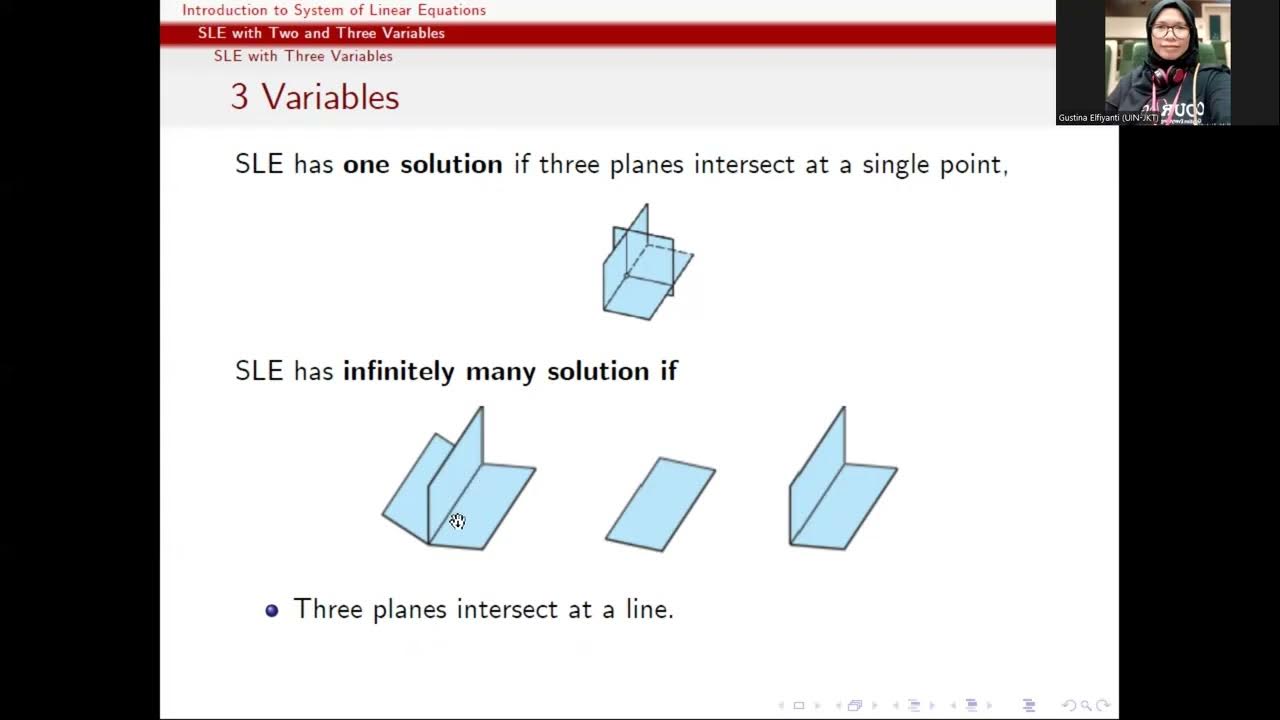Linear equations Gaussian Methods - English
Summary
TLDRThis tutorial guides users through solving systems of linear equations using Scilab, focusing on the Gauss Elimination and Gauss-Jordan methods. It explains how to develop Scilab code to perform these methods, from inputting the coefficient matrix and right-hand side matrix to solving for the unknown variables. The tutorial also covers the step-by-step process of Gaussian elimination, forward elimination, back substitution, and Gauss-Jordan’s row operations. By the end of the video, learners will be able to use Scilab to efficiently solve systems of linear equations using these two methods.
Takeaways
- 😀 Learn how to solve systems of linear equations using Scilab.
- 😀 Understand the Gauss Elimination and Gauss-Jordan methods for solving linear systems.
- 😀 Gain knowledge of how to write and implement Scilab code for solving linear equations.
- 😀 The tutorial covers solving systems of equations with both theoretical explanations and practical code examples.
- 😀 The Gauss Elimination method involves converting the augmented matrix into upper triangular form using row operations.
- 😀 After performing Gauss Elimination, back substitution is used to solve for the unknown variables in the system.
- 😀 The Gauss-Jordan method focuses on converting the matrix into diagonal form and then adjusting the elements to solve for the unknowns.
- 😀 Scilab code uses the 'input' function to receive user inputs for the coefficient matrix (A) and constants matrix (b).
- 😀 Both methods require ensuring that the coefficient matrix is square and that the matrices are compatible for the operations.
- 😀 The tutorial also provides a guide to executing the Scilab code in a step-by-step manner using example matrices.
- 😀 The Spoken Tutorial project offers further resources, including certificates and workshops for learners interested in mastering Scilab.
Q & A
What is the main objective of this tutorial?
-The main objective of this tutorial is to teach how to solve systems of linear equations using Gauss Elimination and Gauss-Jordan methods in Scilab, along with developing Scilab code to solve these equations.
What software and operating system are being used in this tutorial?
-The tutorial uses Ubuntu 12.04 as the operating system and Scilab version 5.3.3 for solving the linear equations.
What are the basic prerequisites for learners to follow this tutorial?
-Learners should have basic knowledge of Scilab and an understanding of how to solve linear equations.
What is an augmented matrix in the context of solving linear equations?
-An augmented matrix is a matrix that combines the coefficient matrix and the right-hand side matrix of the system of linear equations into one matrix, which is used to perform the necessary operations to solve the system.
How does the Gauss Elimination method work?
-The Gauss Elimination method works by converting the augmented matrix into an upper triangular form through row-wise operations. Afterward, back substitution is used to find the values of the unknown variables.
What happens during forward elimination in Gauss Elimination?
-During forward elimination, row operations are applied to transform the augmented matrix into an upper triangular matrix, where all elements below the diagonal are zero.
What is the role of back substitution in the Gauss Elimination method?
-In back substitution, once the augmented matrix is in upper triangular form, the last row is used to solve for the last variable. This value is then substituted into the other equations to solve for the remaining variables.
How does the Gauss-Jordan method differ from Gauss Elimination?
-The Gauss-Jordan method goes a step further by transforming the augmented matrix into a diagonal form where only diagonal elements are non-zero. It then normalizes these diagonal elements to one and solves for the variables directly.
What is the significance of the pivot element in the Gauss-Jordan method?
-In the Gauss-Jordan method, the pivot element is the first non-zero element of a column, which is used to perform row operations to achieve diagonal form and simplify the system of equations.
What does the 'input' function do in the Scilab code provided in the tutorial?
-The 'input' function in the Scilab code prompts the user to enter the values for the coefficient matrix **A** and the right-hand side matrix **b**. These matrices are then used in the algorithm to solve the system of equations.
Outlines

此内容仅限付费用户访问。 请升级后访问。
立即升级Mindmap

此内容仅限付费用户访问。 请升级后访问。
立即升级Keywords

此内容仅限付费用户访问。 请升级后访问。
立即升级Highlights

此内容仅限付费用户访问。 请升级后访问。
立即升级Transcripts

此内容仅限付费用户访问。 请升级后访问。
立即升级浏览更多相关视频

METODE NUMERIK P2 | METODE GAUSS UNTUK MENYELESAIKAN SPL

Introduction to SLE

SPLTV #Part 7 // Metode Eliminasi Gauss // Metode Eliminasi Gauss Jordan // Gauss-Jordan

SERI KULIAH ALJABAR LINEAR ELEMENTER || IMPLEMENTASI GAUSS JORDAN PADA MASALAH COMPUTER SCIENCE

Gauss-Jordan Elimination

GDA-110 Metnum | Aturan Cramer
5.0 / 5 (0 votes)
